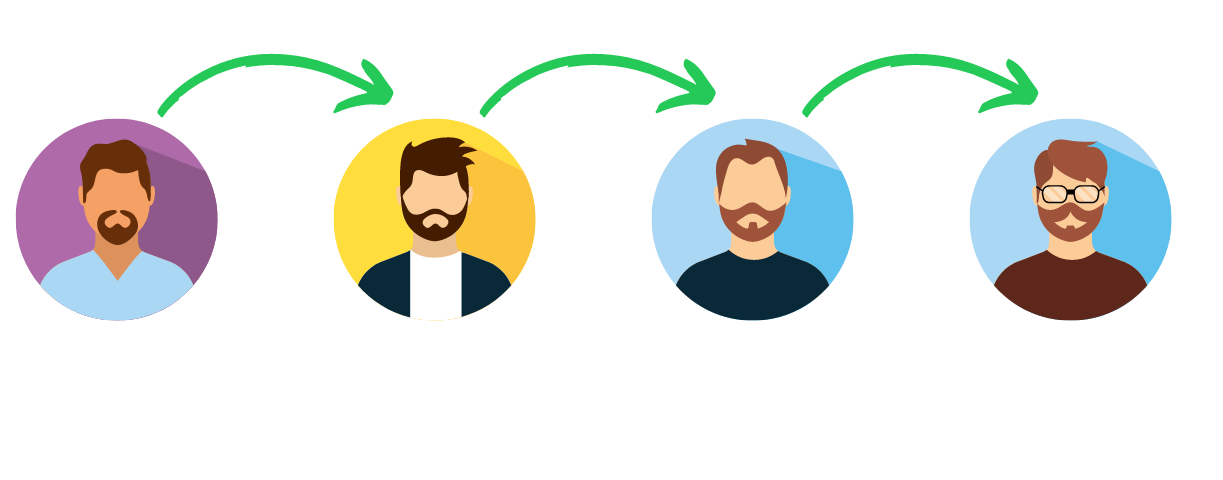This page is intended for Klarna employees only
Specifically those working in Fraud & Risk engineering
Nobody else need bother reading beyond this point.

Data is critical for fraud prevention
When a new customer signs up to Klarna, you must very quickly check whether they already have an account.

Transitive hops
The problem is, that it is very difficult to retieve an entire "identity graph" when it is connected to more customer records. We call these connections "transitive hops".

In a regular data system, each "hop", e.g. from A to B, then B to C takes a fixed amount of time. The more complicated the identity graph, the longer it takes to retrieve the entire graph of data.
Fraudulent identity graphs
Fraudsters often create multiple customer accounts as they repeatedly try to defraud ecommerce companies.
Therefore, identity graphs belonging to fraudsters often contain large numbers of customer records.
This means that the more likely it is that an identity graph belongs to a fraudster, the less likely it is that you are able to retrieve the entire entity graph to use in your fraud detection algorithms.
This is especially true when you are trying to make <1s fraud and risk decisions in ecommerce.
The unfortunate and expensive result
- Machine-learning fraud detection models run on incomplete customer data,
- therefore they are unable to accurately prevent fraud,
- so money is lost unnecessarily to fraud,
- and repeat fraudsters keep getting away with it.
Tilores solves this
Identity resolution for BNPL fraud detection

Real-time data ingestion
Your system is always up-to-date when data can be ingested via API into your identity resolution platform in <300ms.

Lightning fast search
No matter how complicated the data, complete identity graphs with all associated data are returned via API in ~150ms.

No-code setup
Get deduplicated and record linked data quickly and easily without having to involve engineering teams. No-code makes it simple.

Unlimited scalability
Tilores serverless architecture means it scale up and down immediately to handle any volume of data with no manual intervention.

Zero maintenance
No need for engineers or devops teams to maintain code or servers. Serverless Tilores just keeps on running with no maintenance requirements.

Data governance
A dream for compliance teams. Data provenance rules, easily-explained rules based linking, comprehensive audit trails and configurable data access control.
Hey Klarna people, would you like to see a demo of Tilores?
Company
Get the latest updates
©2025 Tilores, All right reserved.

